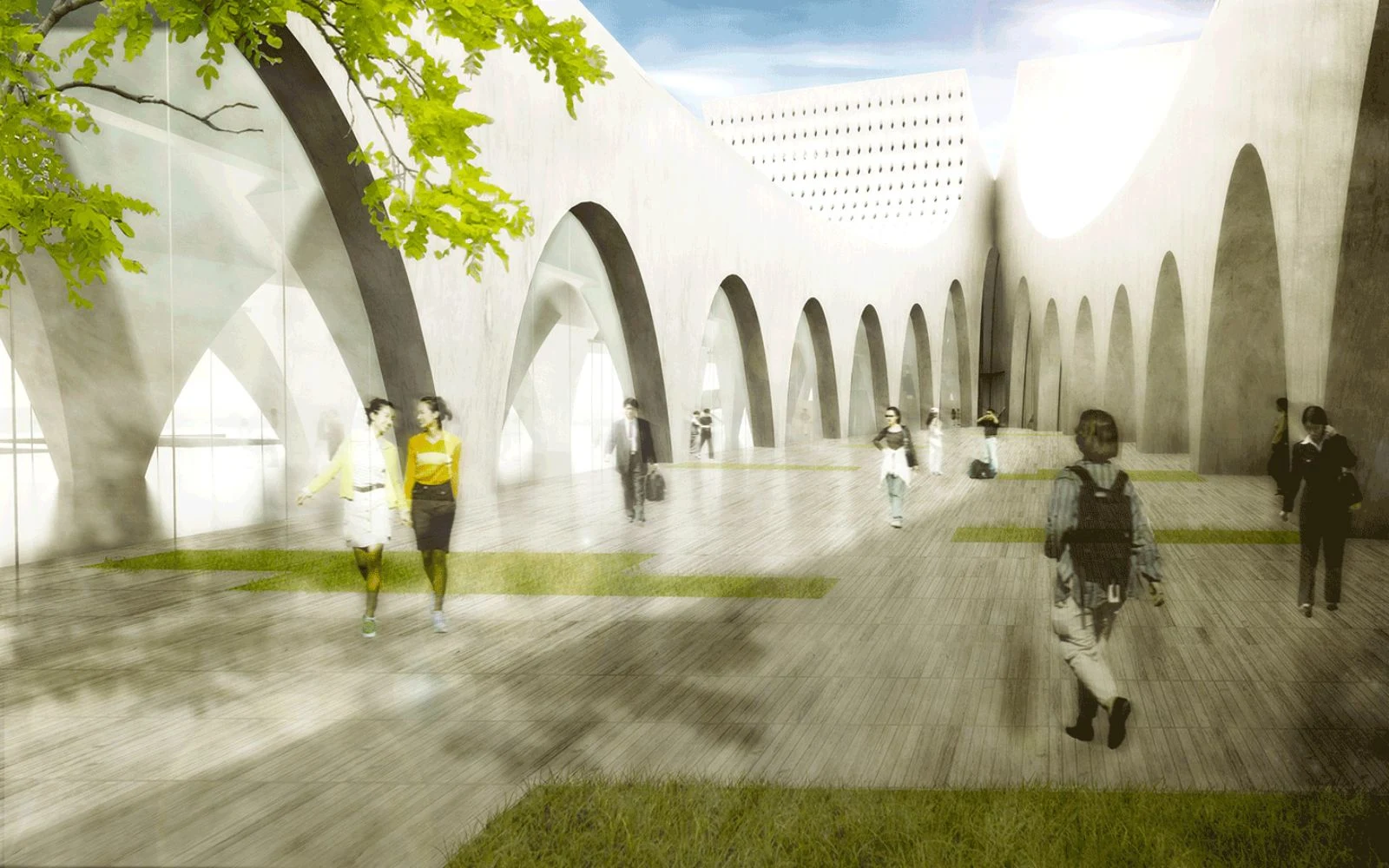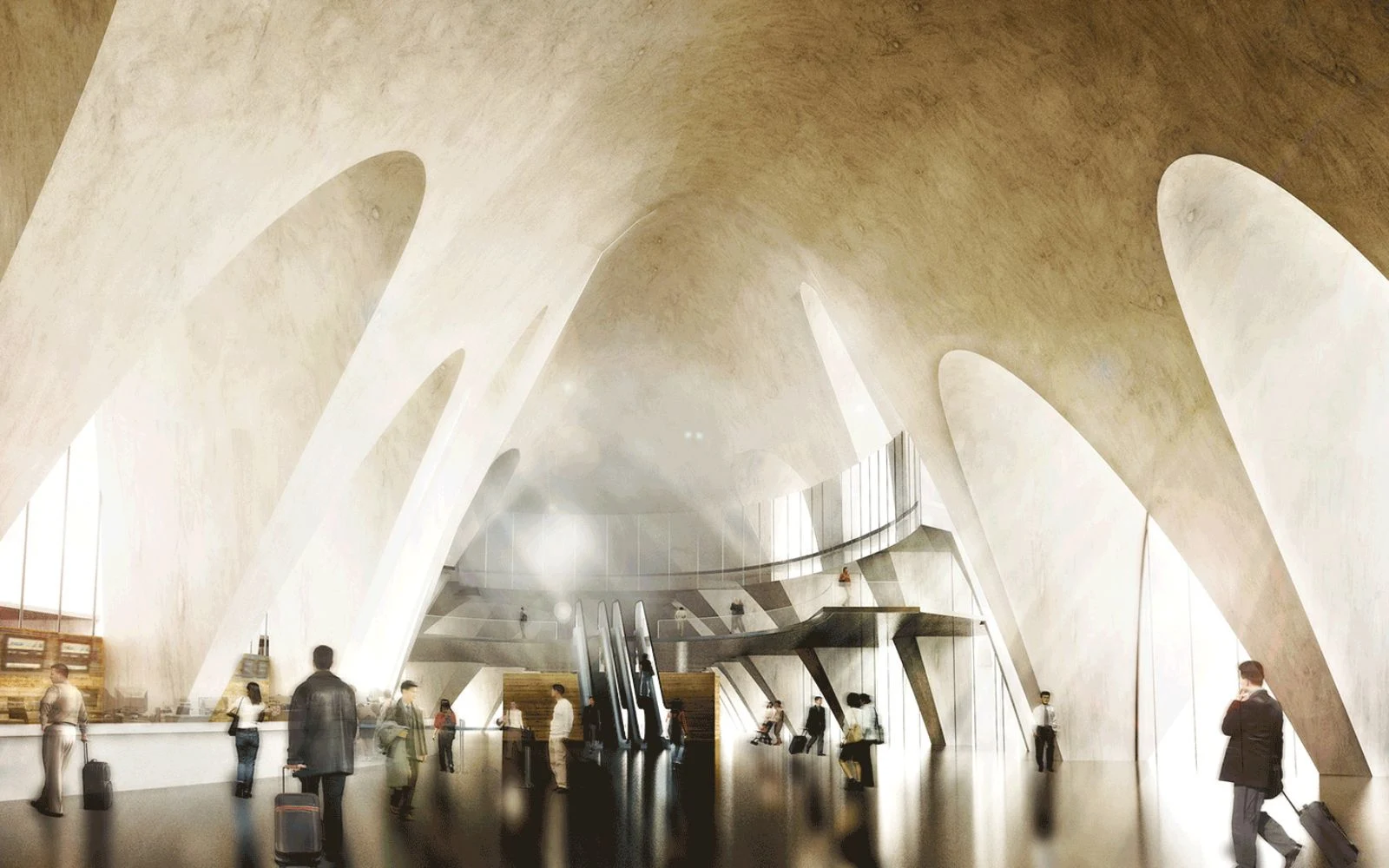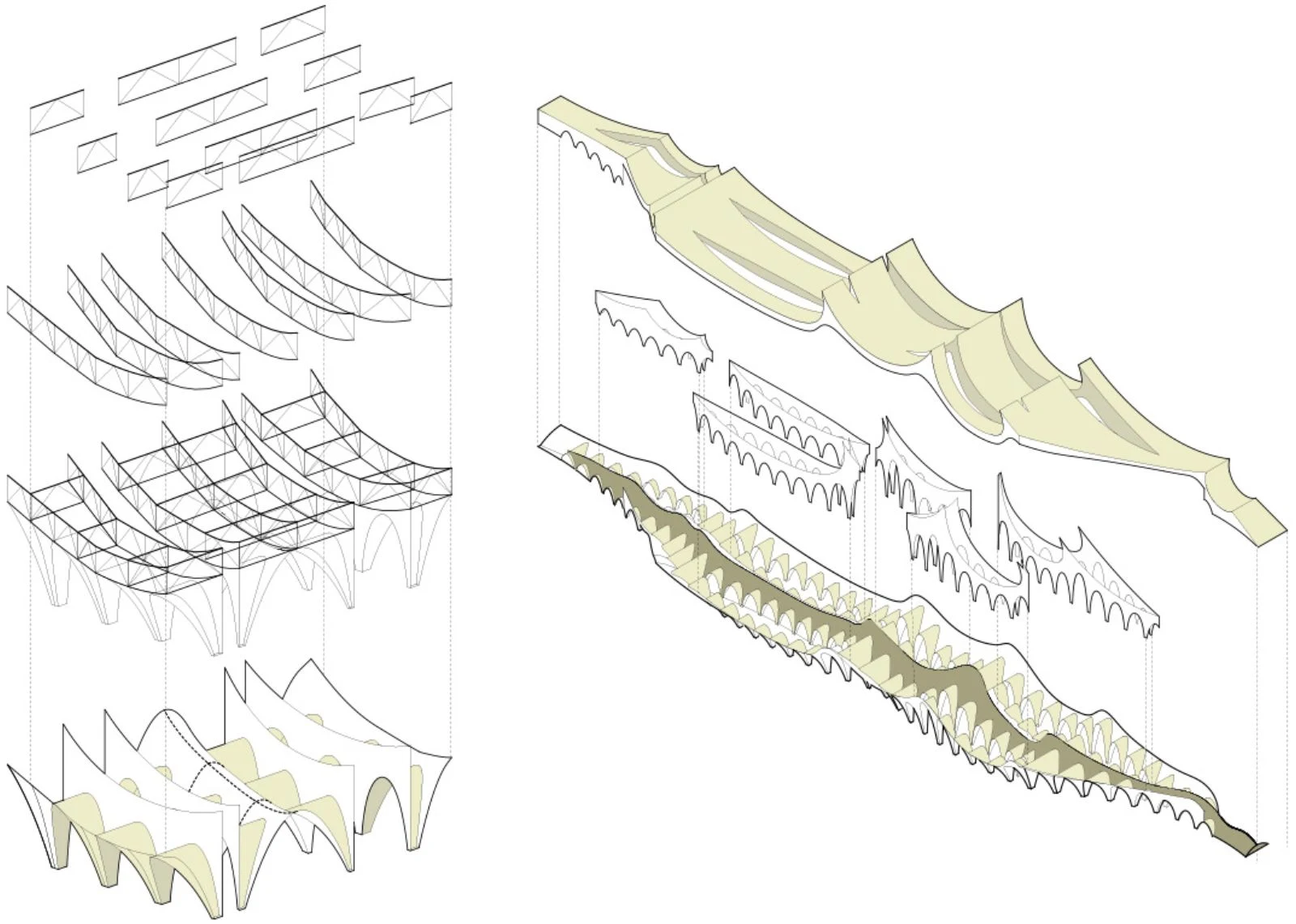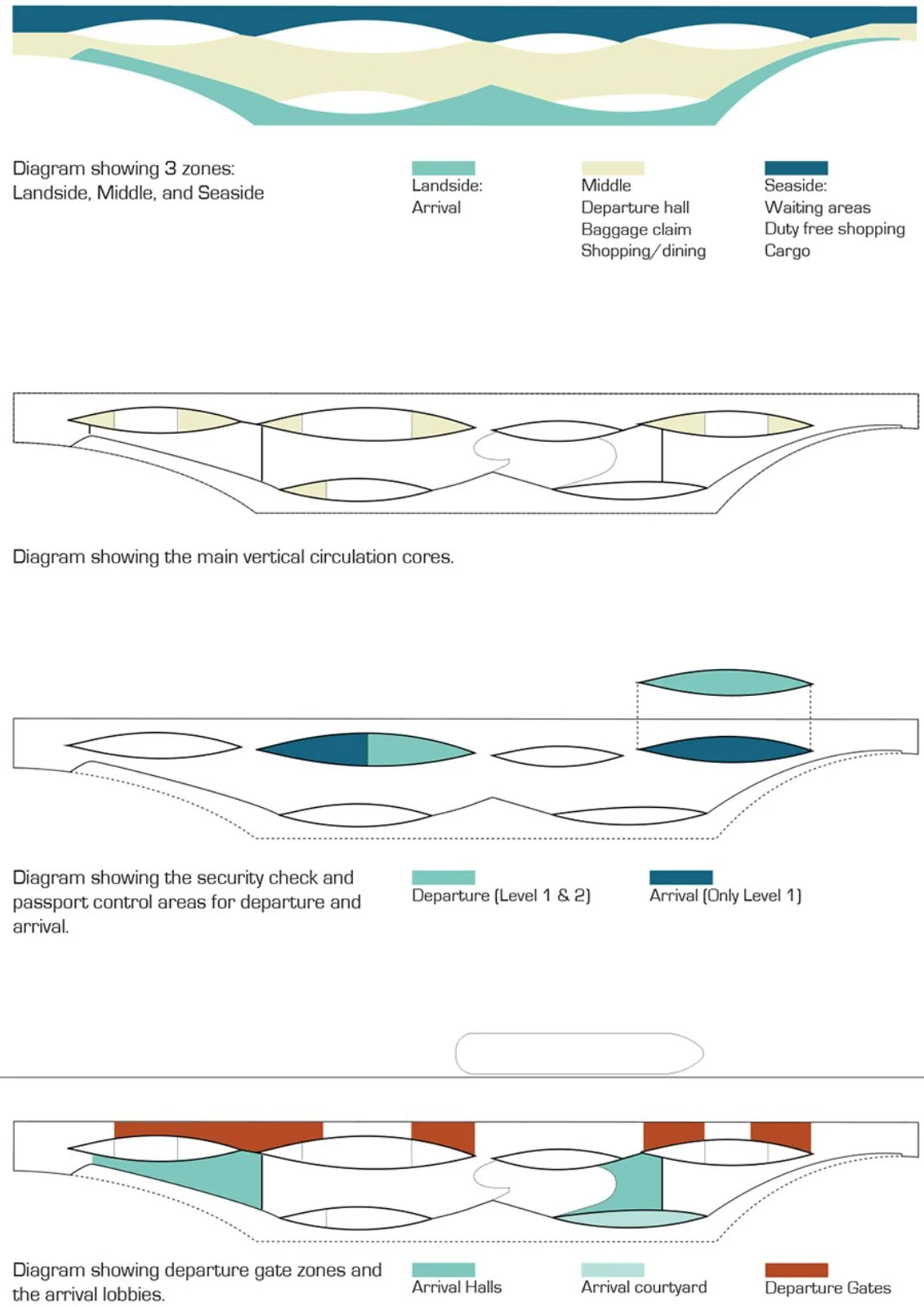
“With its distinct form, the new passenger terminal becomes the gateway to Kinmen as well as Taiwan. to the traveler arriving by ferry, the scalloped skyline of the terminal reflects the landscape of the island.

Taking cues from the scalloped rooflines, archways and courtyard spaces of traditional Kinmen architecture, the new passenger terminal evokes a contemporary spin by scaling up these traditional elements for the new identity of Kinmen Passenger Terminal.

The terminal opens itself along the long, south and north facades. Towards the south, a large cantilevering roof provides shelter and shade for passengers. Through the form and specific technical aspects of the building, the terminal provides a sustainable environment for its occupants as well as for the surrounding natural environment.

Throughout the site, surfaces are constructed as pervious material for parking and bio-swales in-between the parking lots to control water run-off. the building is organized with a series of cores that serve programmatic, technical, and environmental needs throughout the building.

The cores serve as programmatic organizers at the lower level with border control and security check points. They become courtyards in various spots throughout the building and are used for cross ventilation where air is able to move through them and up into the roofscape (controlled venturi effect).

The courtyards also serve to capture grey water for bathrooms, service, and grounds keeping. They bring in light and nature on different levels and provide the travelers with a sense of orientation and relaxation. Formal strategy: the terminal is seen as an investigation of structure and skin through the act of overlaying exterior form with an internal, structural logic.

The terminal is an ideal typology to explore ways to be formally expressive and still maintain a sense of order and efficiency in how it’s built. the simultaneous exploration of form (skin) and logic (structure) began to create productive overlaps of contrasting elements.

Both the skin and structure are not seen as one in the same but actually oppose one another to create contradictions between form and space. That contrast becomes productive and the fusion of form and interior merge at the thresholds of archways.” Aptum Architecture

Five firms, with two Spanish studios, are still in the running for the Port of Kinmen Passenger Service Center International Competition. Hosted by Taiwan's Kinmen County Government, the winner will be master architect of a two-phase project that consists of a new multi-functional terminal facility and expansion for the Port of Kinmen.

The StageII finalists are:
- Josep MiasGifre (Spain)
- Lorcan O'Herlihy Architects / Lorcan O'Herlihy (USA)
- JunyaIshigami + Associates (Japan)
- TomWiscombe Architecture (USA)
- Miralles Tagliabue Embt / Benedetta Tagliabue (Spain)